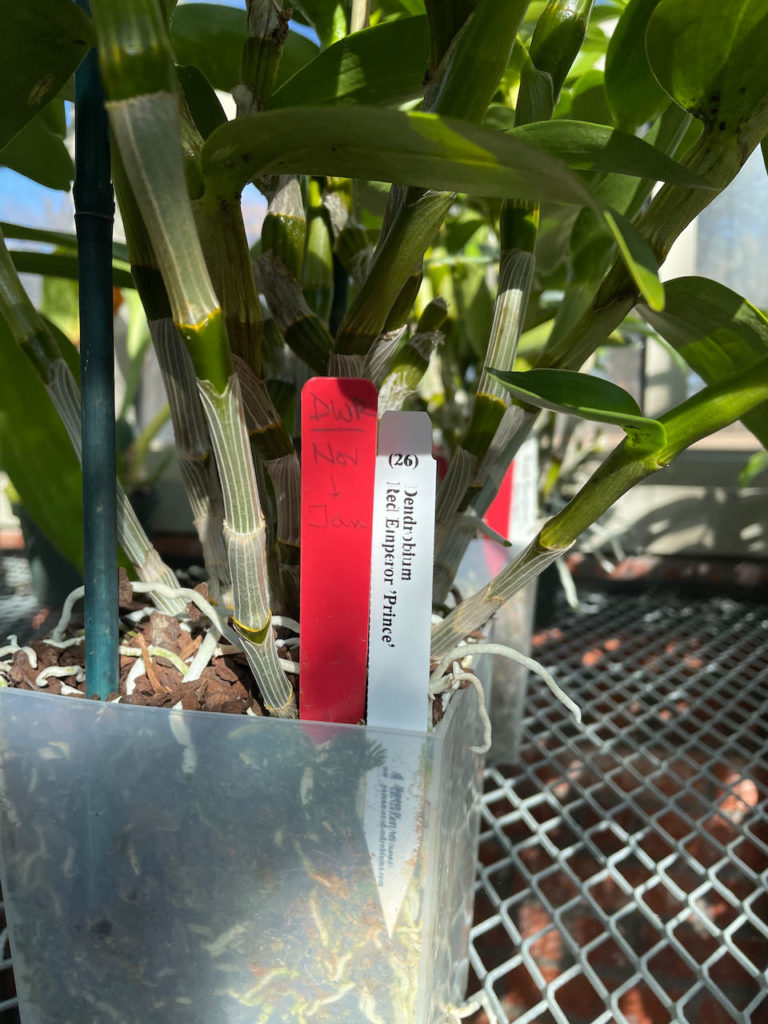Do you have difficulty keeping track of special cultural requirements, e.g. which of your orchids need a drier winter vs. a dry winter rest vs. a dry winter rest until their roots are 3″ long? Do some of your orchids need cooler night temperatures or greater day/night temperature differential (DIF) to initiate flowers? It can be daunting to keep track of which orchids need what when!
Having been educated in scientific investigation, I use colored tags, as I did to track horticulture research treatments, to identify quickly which of my orchids have special watering or temperature needs.
Cool colors (blue and green) make me think of special temperature requirements, and warm colors (red, orange, and yellow) make me think of special watering requirements. The American Orchid Society Guide to Orchids and their Culture provides the basis for the markings I put on the tags. By the way, pencil is best for writing on tags. It will not fade, as “permanent” markers do! I mark my colored tags with these special codes, adapted from those in the AOS Guide to Orchids and their Culture.
| Tag Color | Code | Meaning |
| blue | CP | Orchid requires “cool period” to initiate flowers, e.g. Cymbidium spp. and hybrids. Write the cool period months on the tag, e.g. Aug–Mar. |
| green | +DIF | Orchid requires “positive day/night temperature differential,” i.e. warmer days and cooler nights, to initiate flowers, e.g. some Stanhopea spp. and hybrids prefer days to be 20–30°F warmer than nights during the summer. Write the +DIF months on the tag, e.g. May–Oct. |
| yellow | DM10 | Orchid requires “drier months”; water about every 10 days, e.g. Paphiopedilum spp. and hybrids. Write the drier months on the tag, e.g. Feb–Apr. Weather permitting, I water these orchids on the 10th, 20th, and 30th of each drier month. |
| orange | DM15 | Orchid requires “drier months”; water about every 15 days, e.g. Lycaste spp. and hybrids. Write the drier months on the tag, e.g. Nov–Feb. Weather permitting, I water these orchids on the 15th and 30th of each drier month. |
| red | DWR | Orchid requires “dry winter rest”; do not water unless pseudobulbs excessively shrivel, e.g. Dendrobium nobile and its hybrids. Write the DWR months on the tag, e.g. Nov–Jan. |
| red | DWR-RW | Orchid requires “dry winter rest”; do not water until new roots are 3″ long, e.g. Clowesestum hybrids. Write the DWR months on the tag, e.g. Nov–Feb, but don’t begin watering until the new roots have grown to about 3” long. |

